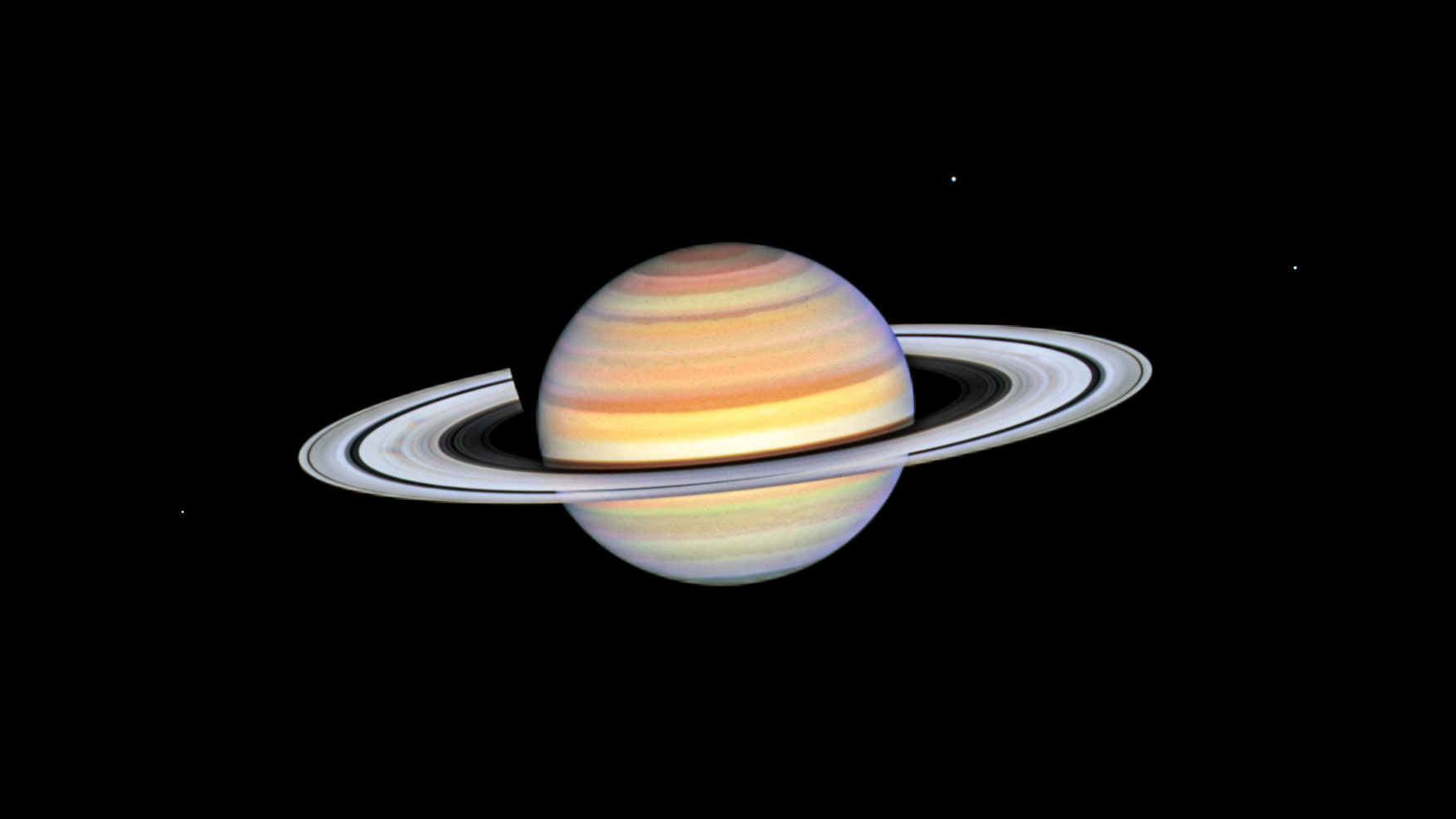4 min read
Cassini Significant Events 07/25/07-07/31/07
August 3, 2007
(Source: Cassini Project)
The most recent spacecraft telemetry was acquired on Tuesday, July 31, from the Goldstone tracking complex. The Cassini spacecraft is in an excellent state of health and all subsystems are operating normally. Information on the present position and speed of the Cassini spacecraft may be found on the "Present Position" web page located at http://saturn.jpl.nasa.gov/operations/present-position.cfm .
Wednesday, July 25 (DOY 206):
Today Radio Science (RSS) performed a High Gain Antenna (HGA) boresight calibration. During the event, the HGA was pointed at Earth as the spacecraft carried out a series of crosshair maneuvers.
A working group has been formed to negotiate downlinks in the proposed extended mission. Now that a strawman DSN plan has been provided by Mission Planning, work on the downlinks may begin. Instead of looking at a single downlink within the Target Working Teams (TWT)/Orbiter Science Teams (OST), this group can take a broader view of the tour, and determine valid downlink secondary vectors suitable for Magnetospheric and Plasma Science (MAPS), rolling vs. non-rolling downlinks, and deep space calibration placement during downlinks.
Thursday, July 26 (DOY 207):
The Extended Mission (XM) Segmentation Working Group (SWG) has been hard at work over the past month working the issues raised at the recent Project Science Group (PSG) meeting on the XM segmentation plan. It is necessary to finalize the plan by Aug. 1 in order to allow the TWTs/OSTs to begin their integration work in August. A review was held today where the PSG approved the segmentation allocations as presented.
One of the outstanding issues raised at the PSG meeting had to do with the existence of the Cross-Discipline TWT during the XM. After considerable discussion over the past month, the SWG decided that it was not necessary to form the Cross-Discipline TWT. To address the concerns of the PSG, pseudo XD periods in the tour will be identified. Joint TWT meetings will be held to integrate these periods using the XD style of integration. Because of the XM tour design, these periods generally do not occur until the last part of the tour.
Friday, July 27 (DOY 208):
The Titan Orbiter Science Team (TOST) hosted a preview of Titan flybys 35 through 40. The goal of these previews is to review the science objectives and measurement plan. Presenters covered what has been learned, and what should be done next.
Science this week included the Ultraviolet Imaging Spectrograph (UVIS) collecting data for mosaic maps of neutral and ionized oxygen emissions from Saturn's inner magnetosphere, a Composite Infrared Spectrometer (CIRS) mid-Infrared stellar spectroscopy of Eta Carinae, and a Cassini Plasma Spectrometer (CAPS) gain test and calibration on DOY 211 in an orientation that will allow the CAPS to observe the local plasma. The Dual Technique Magnetometer (MAG) will also collaborate with CAPS to perform a calibration as well. Also during this week, the Magnetospheric Imaging Instrument (MIMI) was on a campaign to image the dynamics of the inner magnetosphere. This allows MIMI to monitor the global dynamics of the Saturnian magnetosphere.
Sunday, July 29 (DOY 210):
The AACS prime Reaction Wheel Assembly (RWA) friction test for wheels 1, 2 and 4 was performed today. In this test, done every three months, the RWAs are spun up to 900 rpm in both directions and timed as they are allowed to spin down to 0 rpm. The results, compared to the last friction test performed May 1, 2007, showed little overall change.
An Inertial Reference Unit (IRU)-A "piggyback" calibration was performed today as well. The AACS team opens up the IRU from 6 state to 15 state mode during a science turn to validate performance. This calibration is done about once per year as a system performance check.
Monday, July 30 (DOY 211):
The Aftermarket Process for the S37 sequence covering orbits 56 - 58 kicked off today. This 5-week process will address proposed changes that require re-integration of the segments contained in the S37 sequence. Changes could include modifications to key shared resources including, but not limited to, spacecraft attitude, data volume, observing time, op modes, telemetry modes, and waypoints. All proposed science and engineering changes were submitted by Monday, July 30, 2007. On Wednesday, Aug. 1, if all of the requested changes do not fit within scope, there will be an Assessment meeting with the Project Scientist to scope out these proposed changes.
Tuesday, July 31 (DOY 212):
A TOST meeting was held today at the Applied Physics Laboratory in Laurel, Maryland. The purpose of the meeting was to integrate +/-2hours around the proposed Extended Mission Titan flybys. The participants achieved their goals and now plan on applying themselves to the period of time outside +/-2 hours at the next meeting on Aug. 24.







